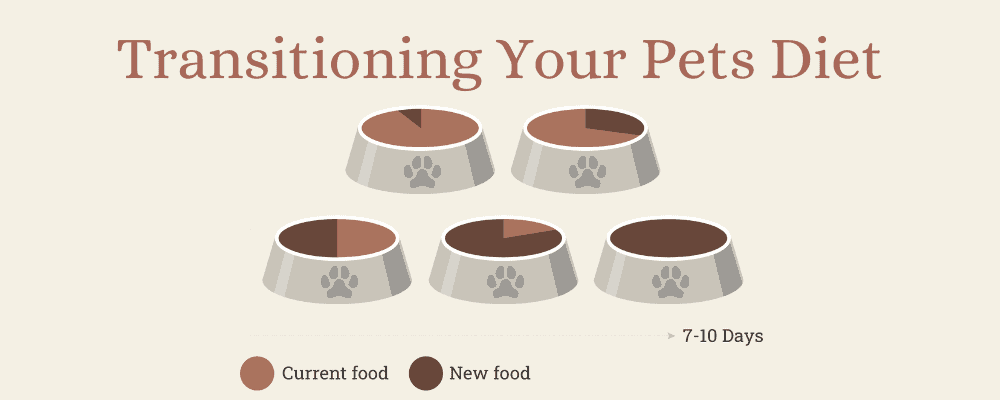Whether your dog needs a therapeutic food or they’re just entering a new stage of life, there are several reasons you may need to transition them to a different pet food. When the time comes to make the switch, you’ll want to do it in a way that doesn’t cause stomach upset. Here are three tips that can help.
It’s never good to overfeed your dog, so make sure the amount you’re giving them is appropriate for their weight and health needs. The best resource to ask is your veterinarian, but you can also check the feeding guides on the pet food packaging for a general idea.
Switching your dog’s food abruptly can cause gastrointestinal upset such as vomiting, diarrhea, and a decreased appetite. Any time you decide to change your dog’s food, you should transition to the new diet gradually in order to give your dog’s system time to adjust to the change. Ideally, these transitions should happen over 5-7 days. During this transition, you will gradually incorporate more and more of the new food by mixing it with your dog’s current diet.
Be patient — if it seems like your dog needs a little more time, make the transition more slowly.
For most dogs, a good diet transition will look like this:
Day 1-2: Mix 25% new food + 75% old food
Day 3-4: Mix 50% new food + 50% old food
Day 5-6: Mix 75% new food + 25% old food
Day 7: Feed your pet 100% new food
While it’s not a necessity, some dogs are a little more stubborn than others, and a little wet food can make all the difference. Be sure to check with your vet on the proper amounts, so as to not go over his daily caloric intake requirements.
